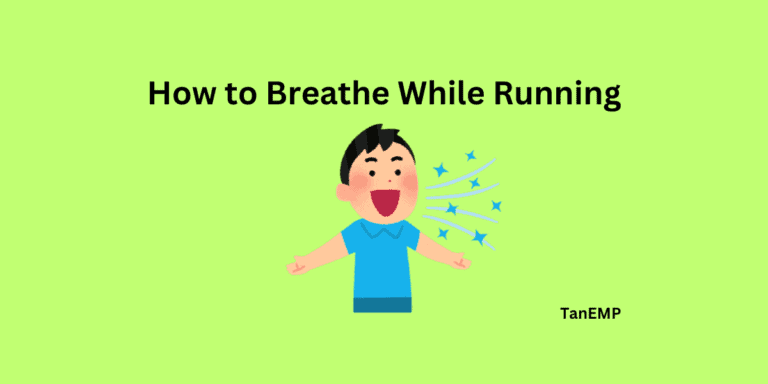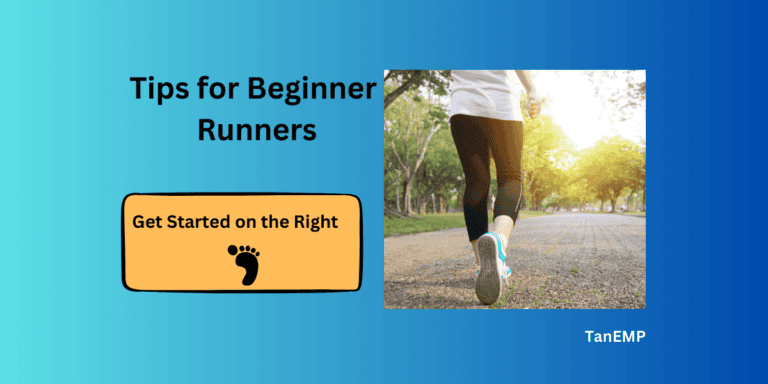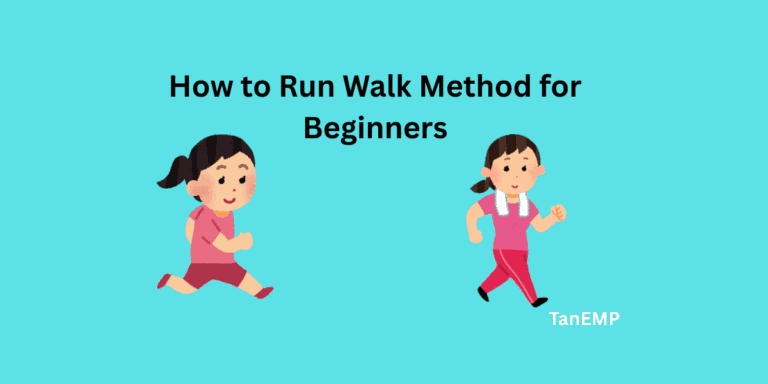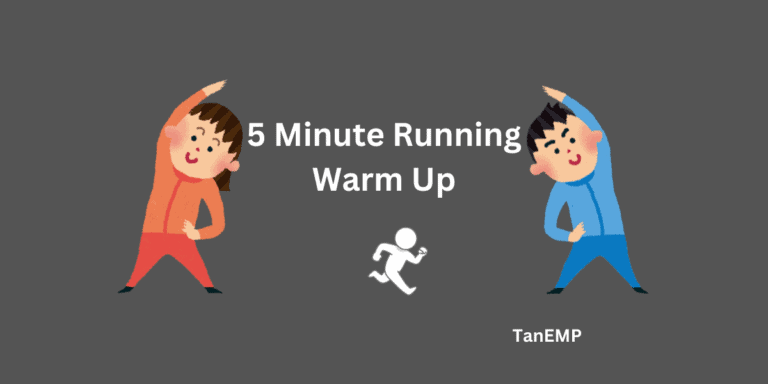Running Terminology Explained: A Beginner’s Guide in 2025
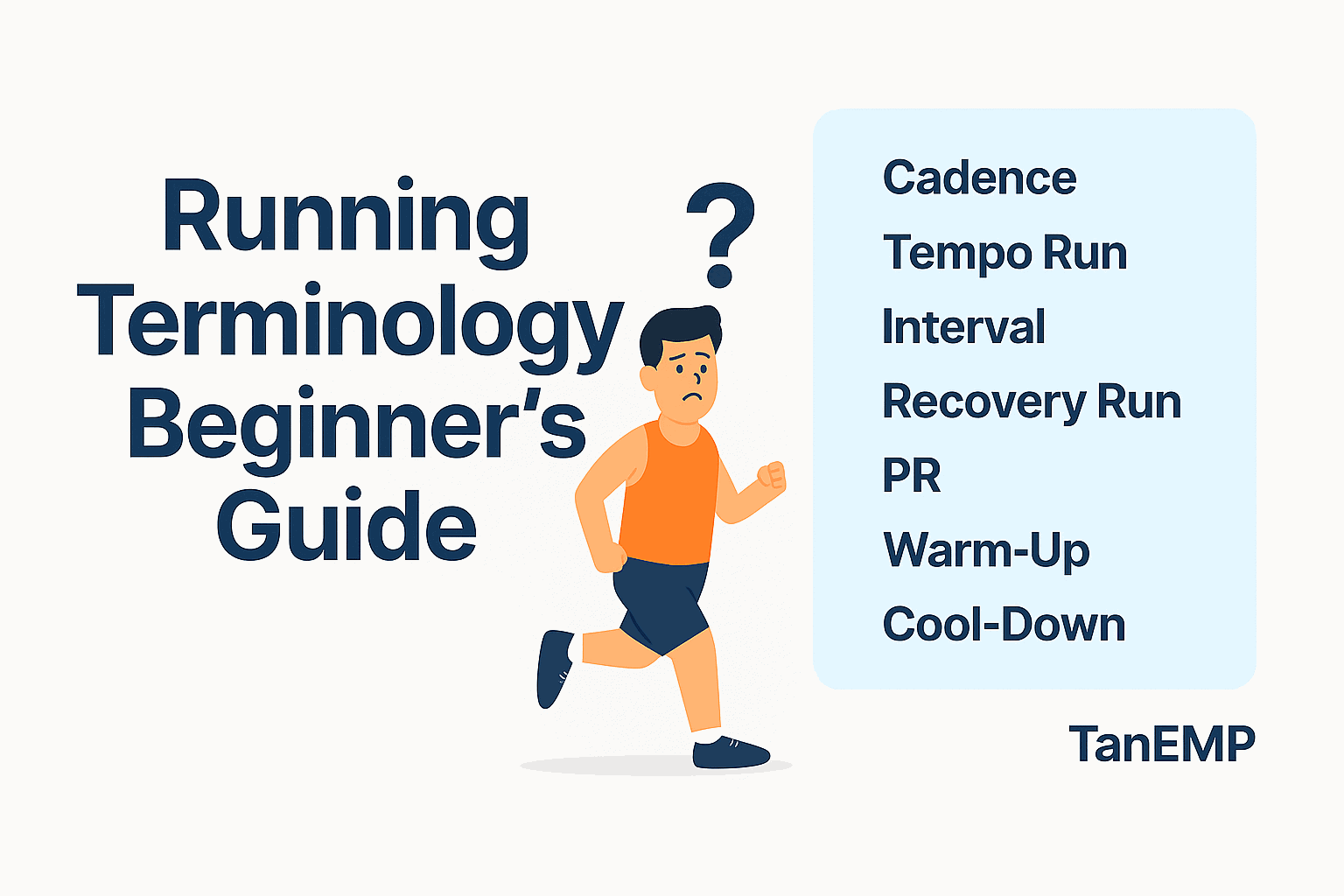
“Wait… what’s a fartlek?”
That was my honest reaction the first time I opened a training plan.
As a dad trying to squeeze in runs between work, kids, and life, I thought running would be simple. Lace up your running shoes, head out the door, and go.
But then I hit terms like running cadence, tempo run, and negative splits — and realized I had no idea what any of it meant.
Even with my background as a chiropractor, being a new runner was still a learning curve. Knowing how the body moves in theory is one thing. Training for a race day? Whole different story.
This post is your plain-language glossary of running terms — explained simply and clearly. No jargon, no intimidation.
Just the key lingo you’ll hear in training plans, running groups, and fitness apps — so you can follow along, ask questions, and feel confident every time you lace up.
Let’s jog through it together.
🔑 Key Running Terms for Beginners
Term | What It Means |
|---|---|
Cadence | Steps per minute while running |
Tempo Run | Moderately hard pace to build endurance |
Interval | Fast bursts mixed with slow jogs or rest |
Fartlek | “Speed play” — mix fast and slow as you go |
Recovery Run | Easy pace to help your body recover |
PR (Personal Record) | Your best race time for a specific distance |
Chip Time | Your actual race time (start to finish) |
Warm-Up | Easy movement before a run |
Cool-Down | Slow jog or walk after your run |
Easy Pace | Comfortable pace where you can talk easily |
🧠 Why Knowing the Lingo Actually Helps
You don’t have to sound like a coach to enjoy running. But knowing a few key terms? That changes everything.
- Follow plans without second-guessing
Whether it’s a Couch to 5K or a HIIT treadmill workout, knowing the lingo takes out the guesswork. - Avoid beginner mistakes
Skip the soreness. Warm-ups, cooldowns, and recovery runs help improve your running performance and reduce injury risk (Mayo Clinic confirms it). - Feel part of the community
Most runners use terms like “negative splits” or “race pace” without thinking. Knowing them helps you feel included, even if you’re just starting. - Improve your running efficiency
Knowing your stride, pace, and cadence helps. So does having proper running form that supports your efficiency. - It makes running more fun
You’ll spend less time Googling mid-run and more time enjoying progress.
🏃♂️ Everyday Running Words You’ll Hear Often
Here are the basics — the core of any training plan or beginner’s vocabulary.
- Warm-Up
Light movement or stretching before your run. Preps the body for motion. - Cool-Down
Slowing down after a run. If you’re dealing with sore legs, try these muscle strain recovery tips. - Easy Pace
Relaxed, talk-friendly speed. Helps build endurance without overtraining. - Recovery Run
A gentle run to help muscles recover from hard efforts. Great for improving long-distance running stamina without stressing the body. - Negative Splits
Running the second half faster than the first. A helpful pacing tool for any race course. - PR (Personal Record)
Your fastest time ever for a certain distance, like a 5K or your best marathon time.
💨 Speed Workouts — Not Just for Elite Athletes
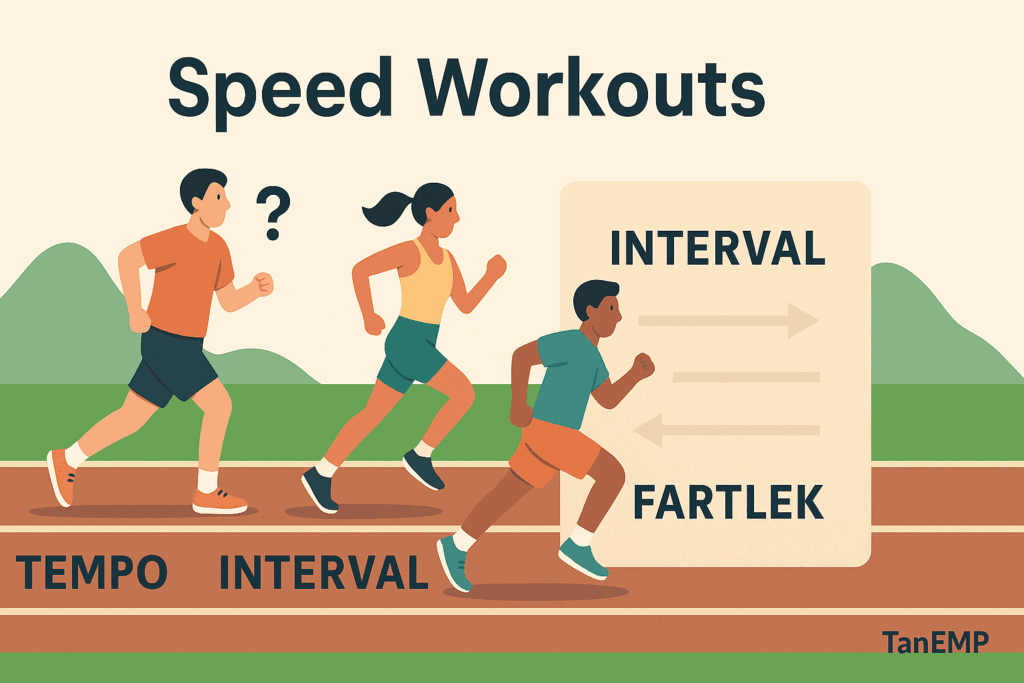
Even casual runners benefit from speed work. Here’s how to understand the terms:
- Tempo Run
Run at a “comfortably hard” pace. Not a sprint, but faster than an easy pace. - Interval Training
A mix of running fast and walking/resting. For example, 30 seconds fast, 90 seconds slow. - Fartlek
Swedish for “speed play.” Add speed bursts randomly during your run. - Track Workout
Structured intervals are done on a track. Great for pacing and learning how to manage speed. - Mile Splits
Your pace for each mile. Great for seeing how your pace changes across a run.
💡 Tip: You don’t need to be an elite athlete to benefit. One speed session per week can go a long way.
🥾 Trail Running Terms (For the Off-Road Curious)
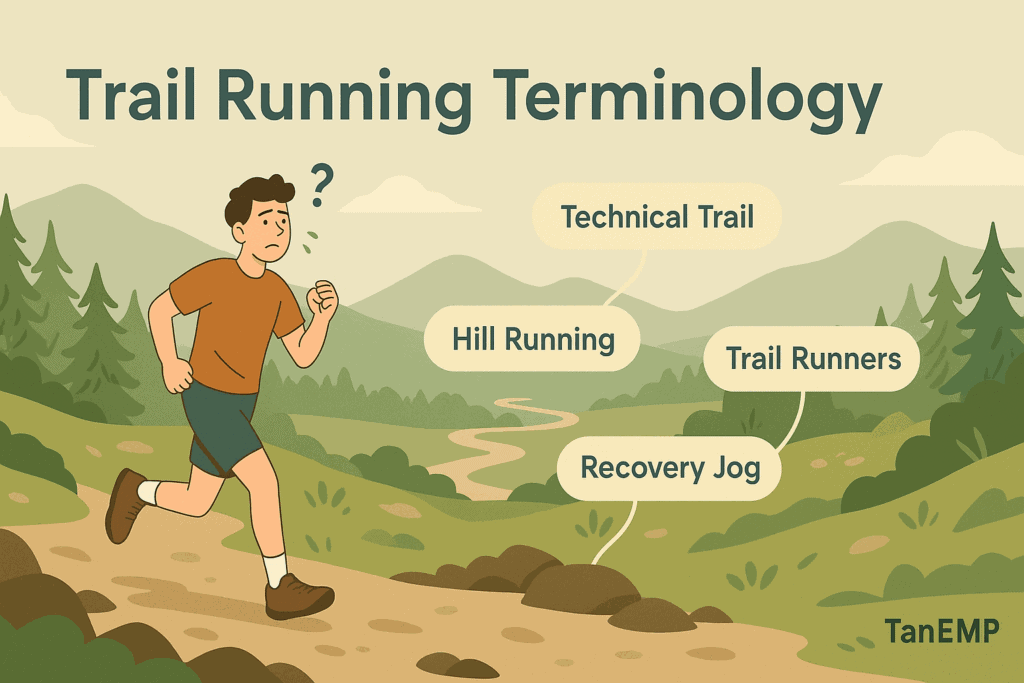
- Trail Runners
Both the shoes and the people. Shoes have more grip for uneven terrain. - Technical Trail
Rocky, root-covered, or uneven trails. Requires more focus and balance. - Narrow Trail
Single-track trail. Only wide enough for one runner at a time. - Hill Running
Steep climbs or descents — great for building strength. - Motion Control
A shoe feature that helps with stability, especially helpful on trails. - Recovery Jog
Super easy pace to loosen up sore legs after trail runs.
💡 New to trail running? A full guide is coming soon.
In the meantime, brush up on these tips for beginner runners, including confidence boosters for different surfaces.
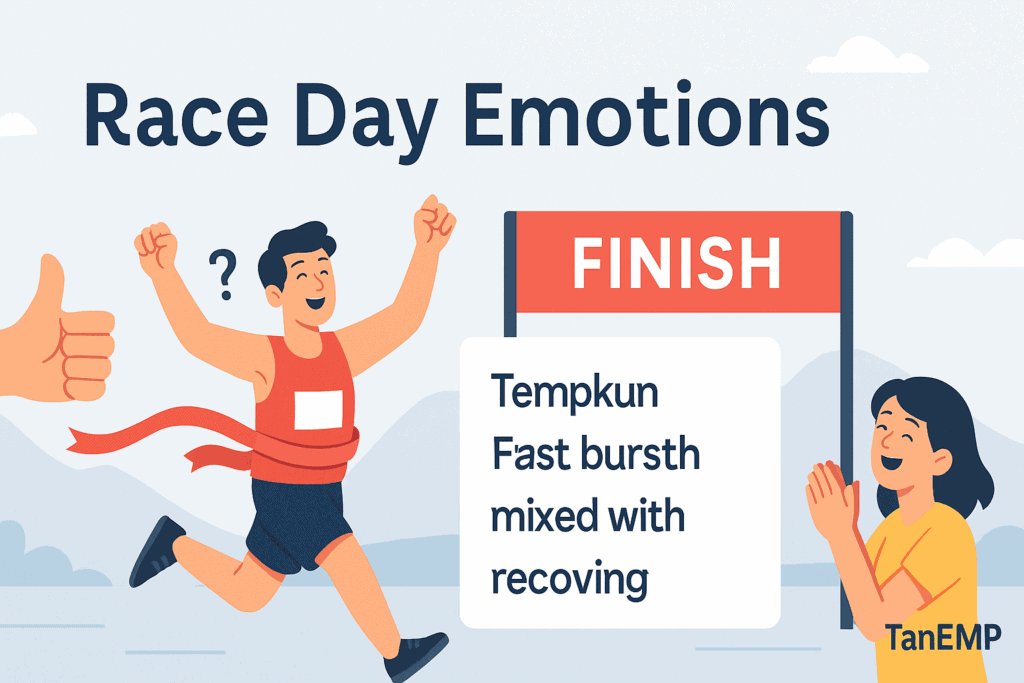
🏁 Race & Distance Terms (Even If You’re Not Racing Yet)
- Race Day
The day of your event — full of nerves, excitement, and personal wins. - 5K, 10K, Half Marathon, Marathon
Common race distances: 3.1, 6.2, 13.1, and 26.2 miles. - Chip Time
Your true race time, from when you cross the start to the finish. - Race Strategy
Your pacing plan often includes aiming for negative splits. - Marathon Time
The total time it takes to finish a marathon. Varies widely. No pressure to race unless you want to.
📱 Running Metrics & Tech Terms
- Cadence
Steps per minute. 160–180 is common to reduce injury risk. - Stride Length
Distance covered in one step. Short and quick = more efficient. - Running Efficiency
How well your body converts energy into motion. Improves with better form and training. - GPS Tracking
Used by most running apps or watches to monitor distance, route, and pace. - Running Watch
A device like Garmin or Apple Watch that tracks pace, heart rate, and more. - Muscle Fatigue vs. DOMS
Fatigue = tired legs. DOMS = soreness 1–2 days after a hard run. Both are normal.
Wrap-Up
You don’t need to memorize every single term in this glossary of running terms before you start. You’ll learn along the way.
If a busy dad with two kids can figure it out between diaper changes and tempo runs, so can you.
Just take it one run at a time.
Bookmark this post, and revisit it whenever something new pops up. You’ve got this.
If you’re just getting started with running, check out these beginner-friendly guides:
- How to Start Running: Step-by-Step
- Proper Breathing Technique for Beginners
- Run-Walk Method for Beginners
❓FAQs: Running Terminology for Beginners
1. What running terms should beginners know?
Start with cadence, tempo run, interval, recovery run, race day, and PR.
2. Is slow running helpful for beginners?
Yes — running slower builds endurance and helps with recovery while reducing injury risk.
3. What’s the difference between race pace and marathon time?
Race pace is your goal speed during a race. Marathon time is your total finish time.
4. Do I need expensive running shoes or watches to start?
Nope. Comfortable shoes and a GPS app on your phone are enough to get going.
5. What if I forget a term mid-run?
No stress. Come back to this glossary of running terms anytime. Most runners learn as they go.

